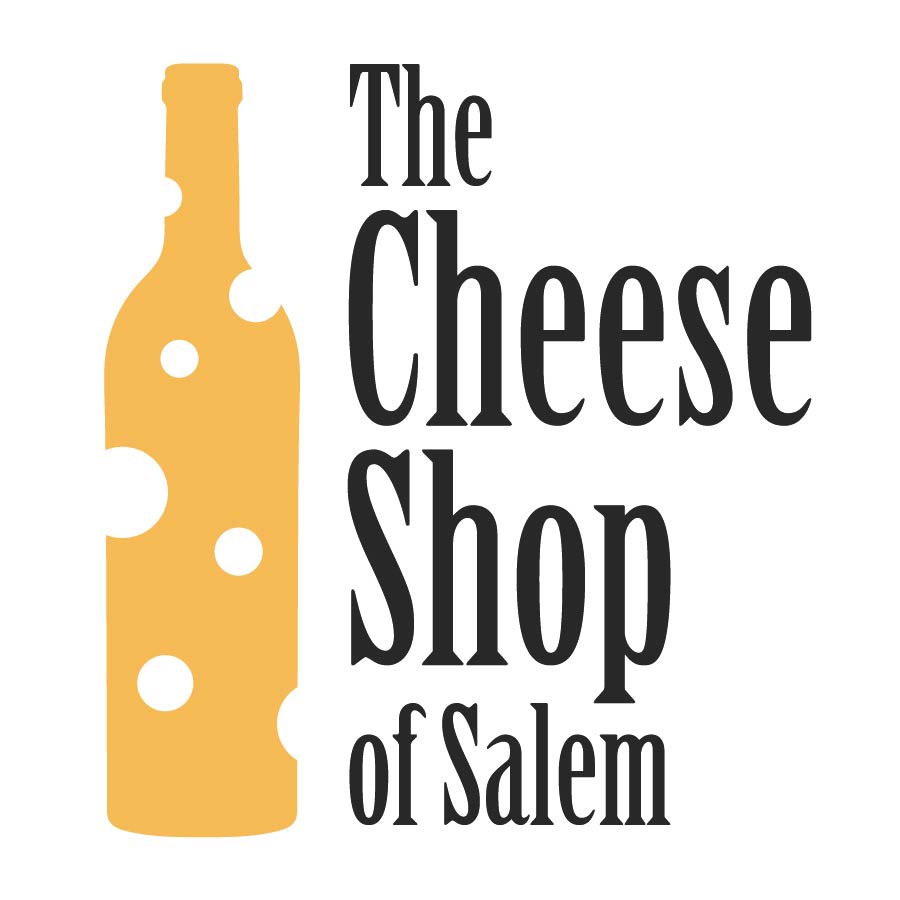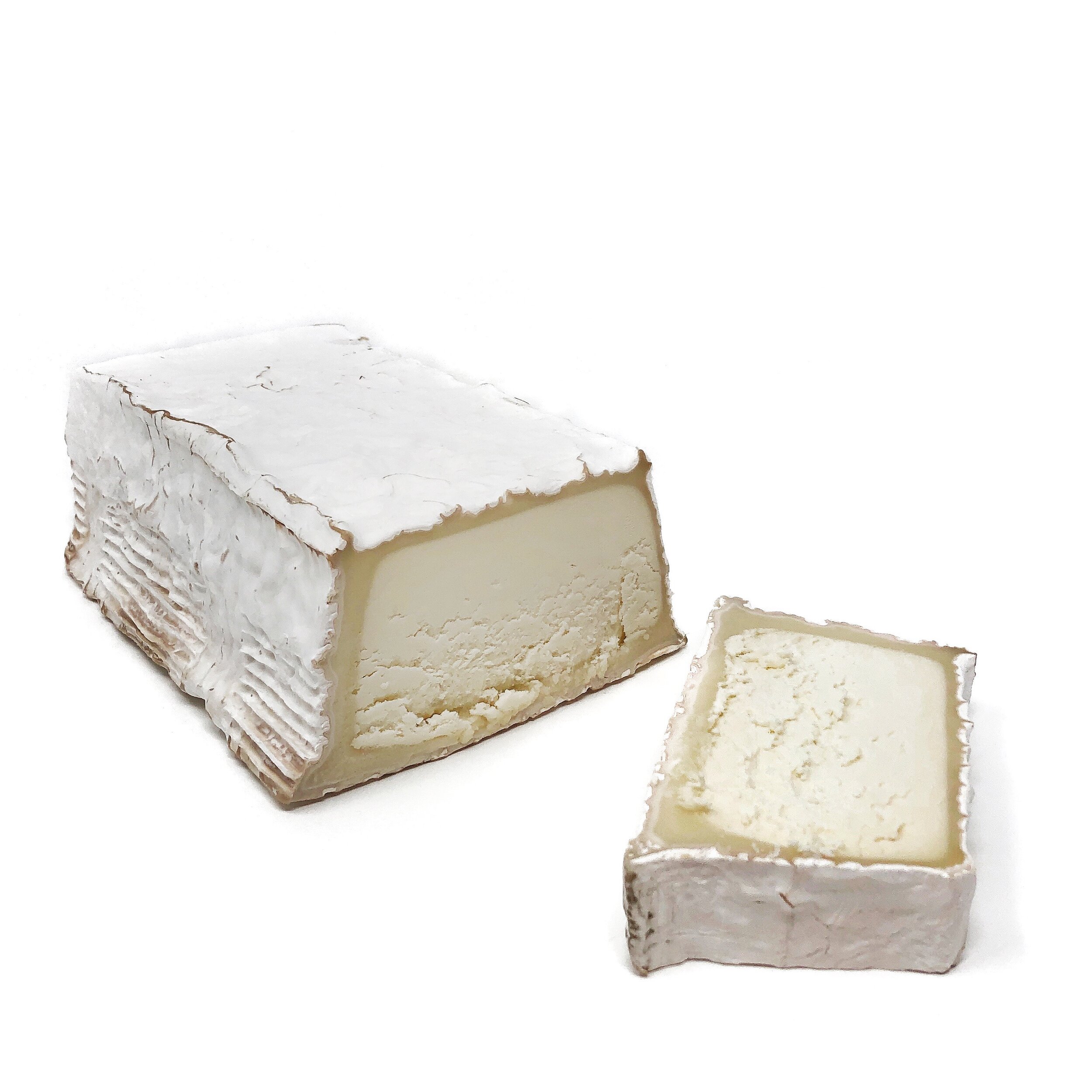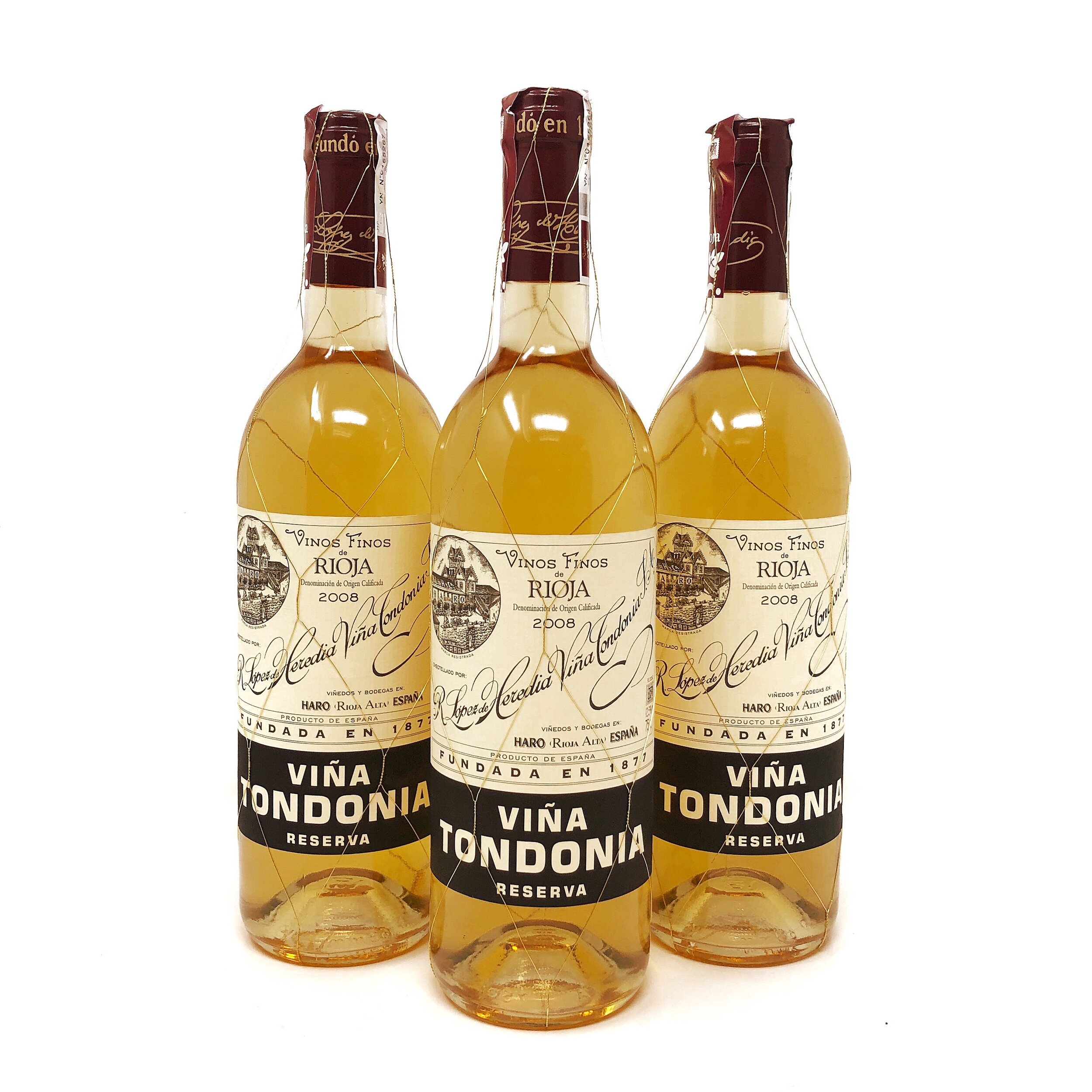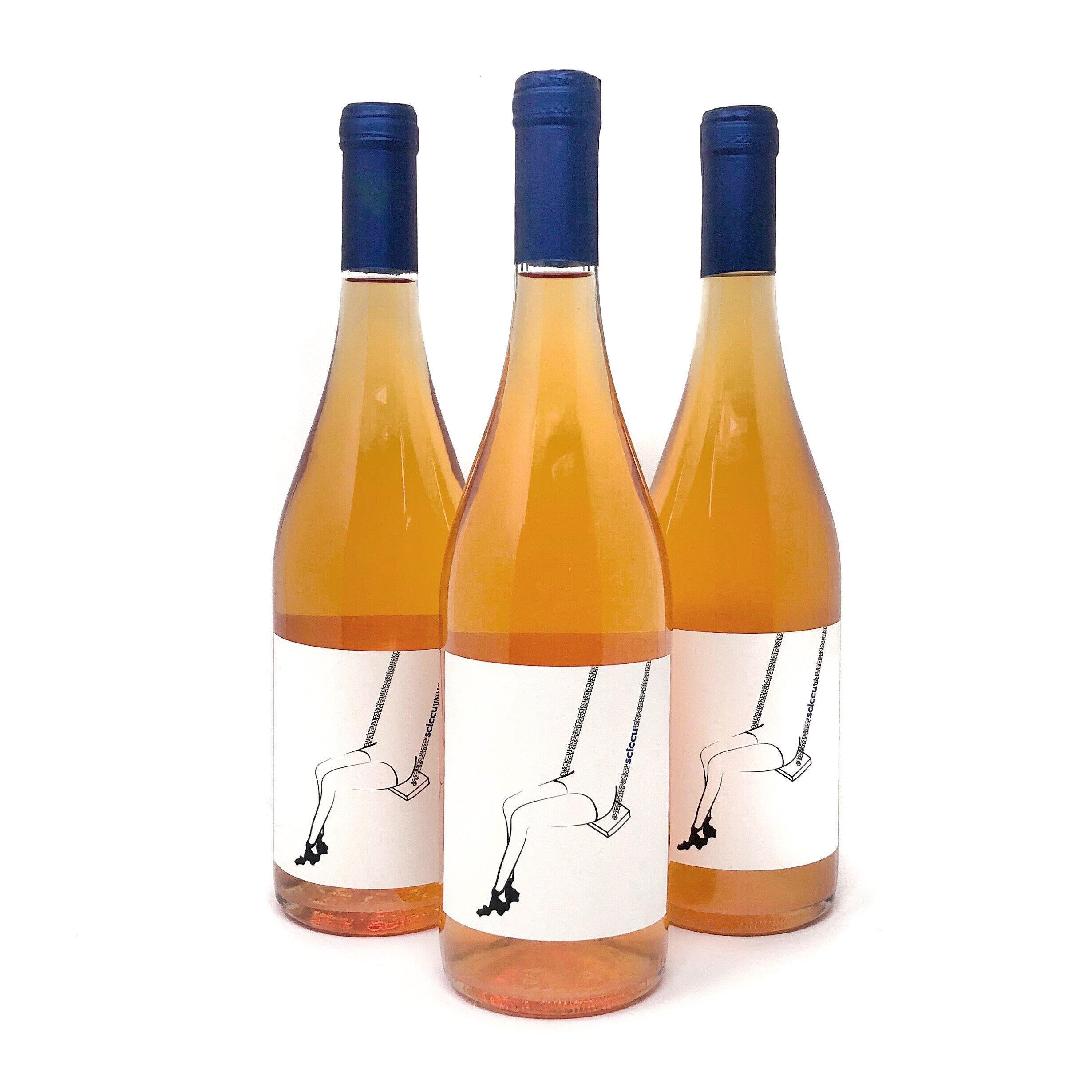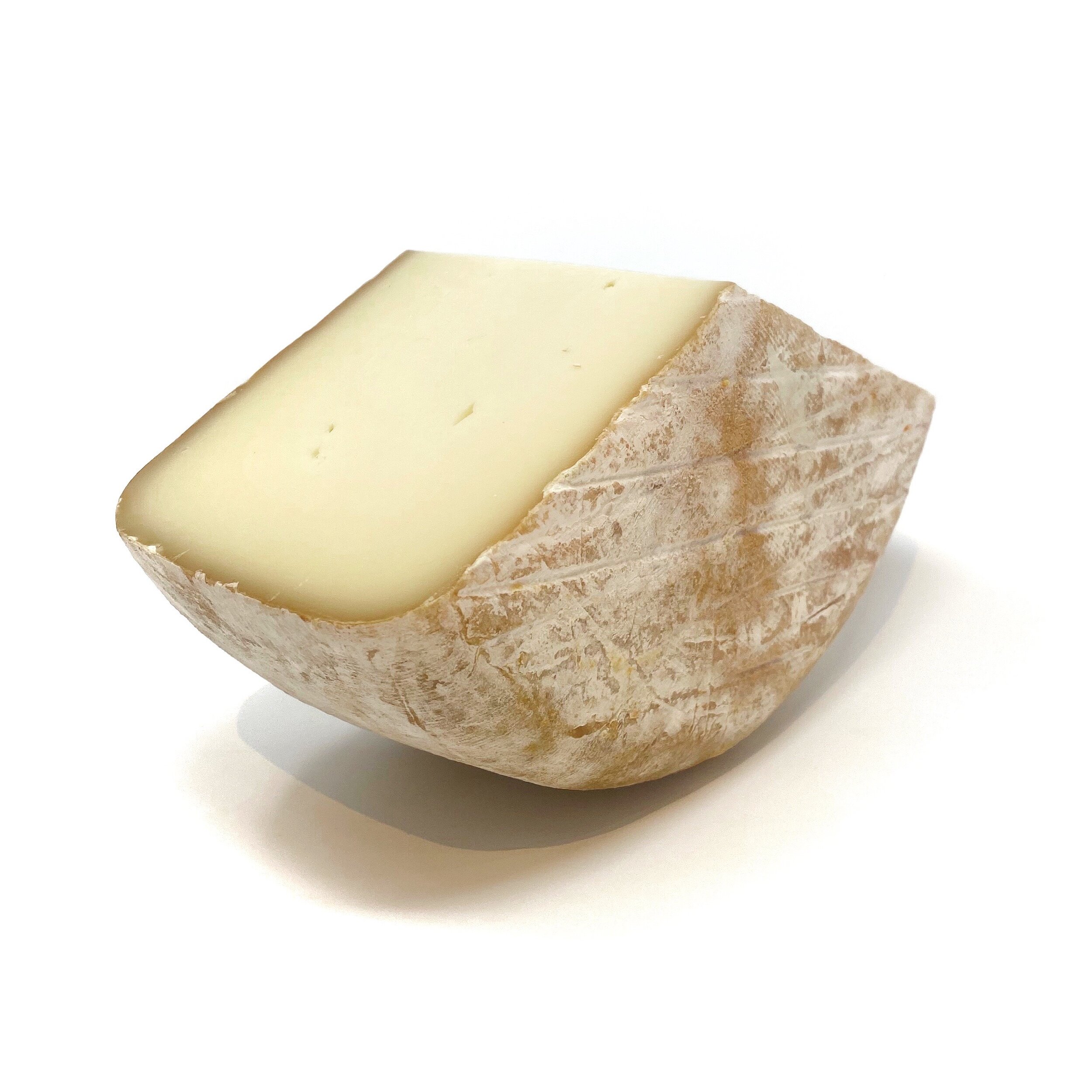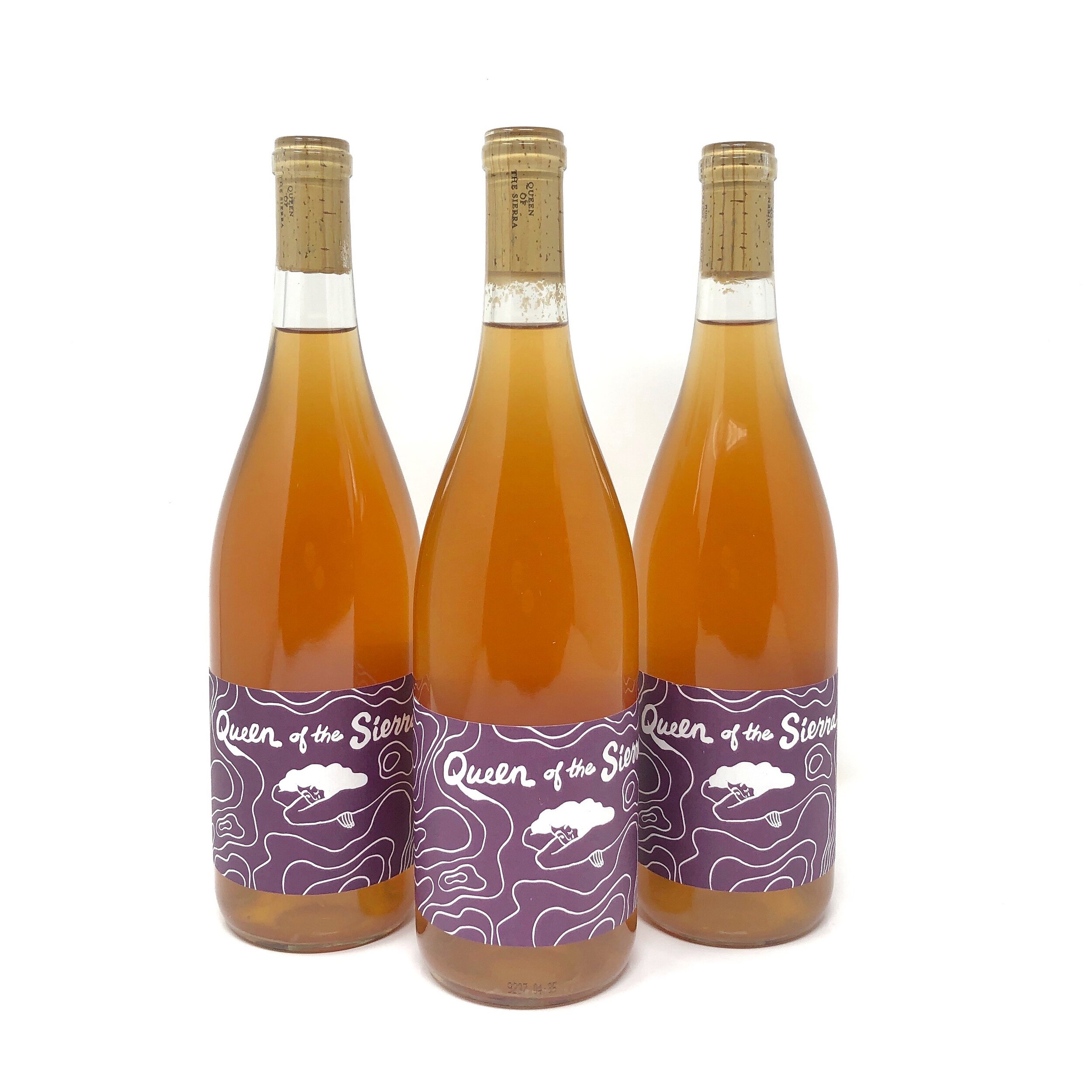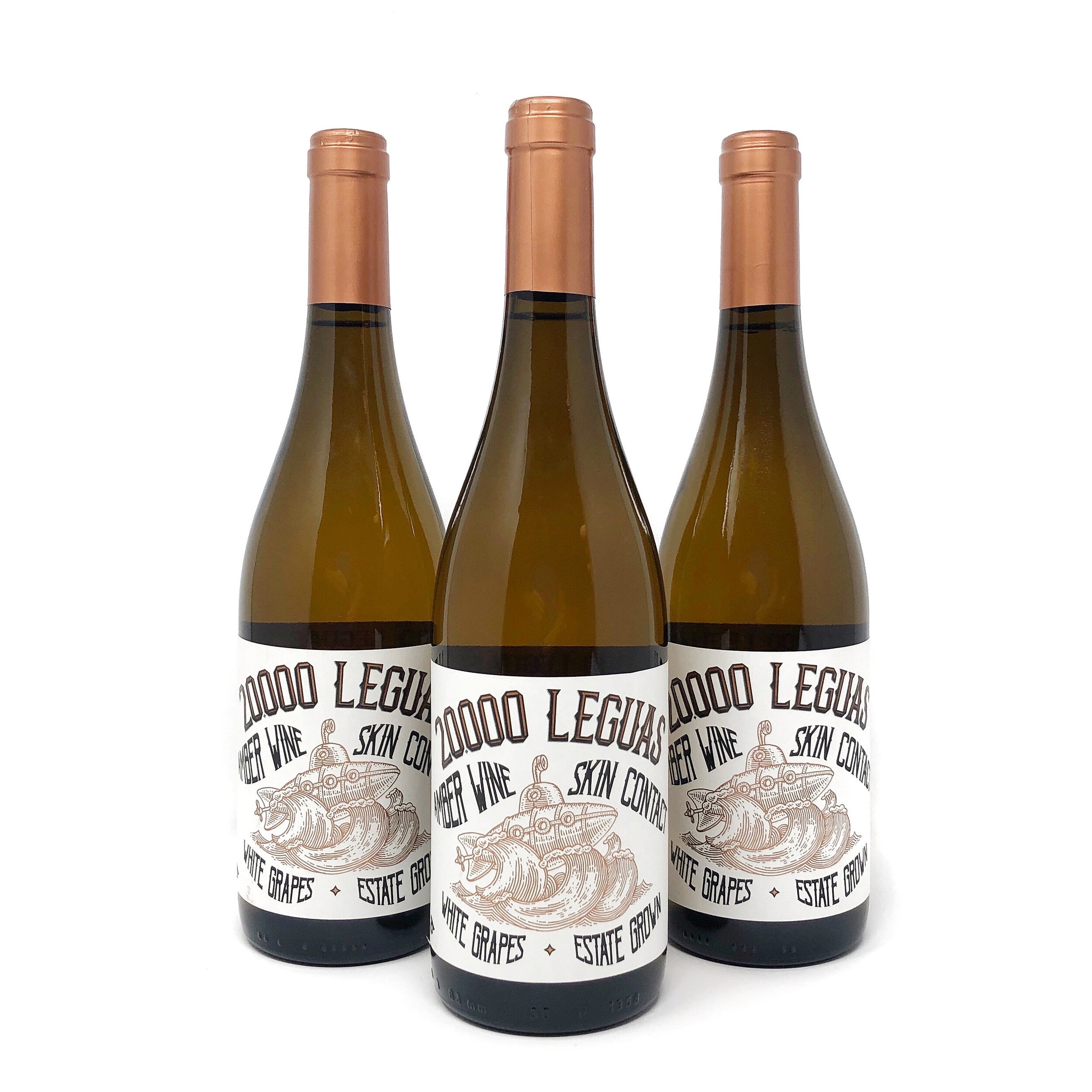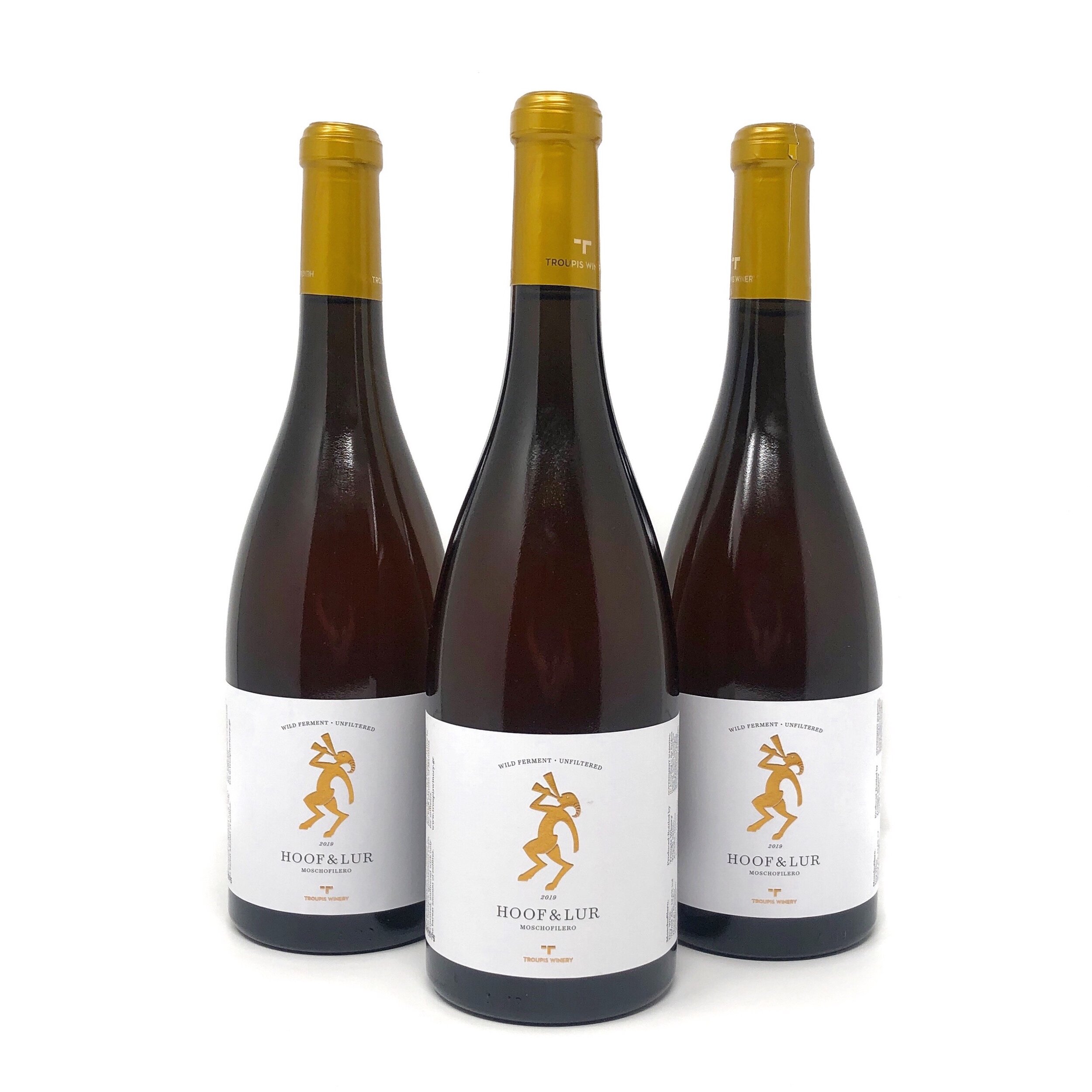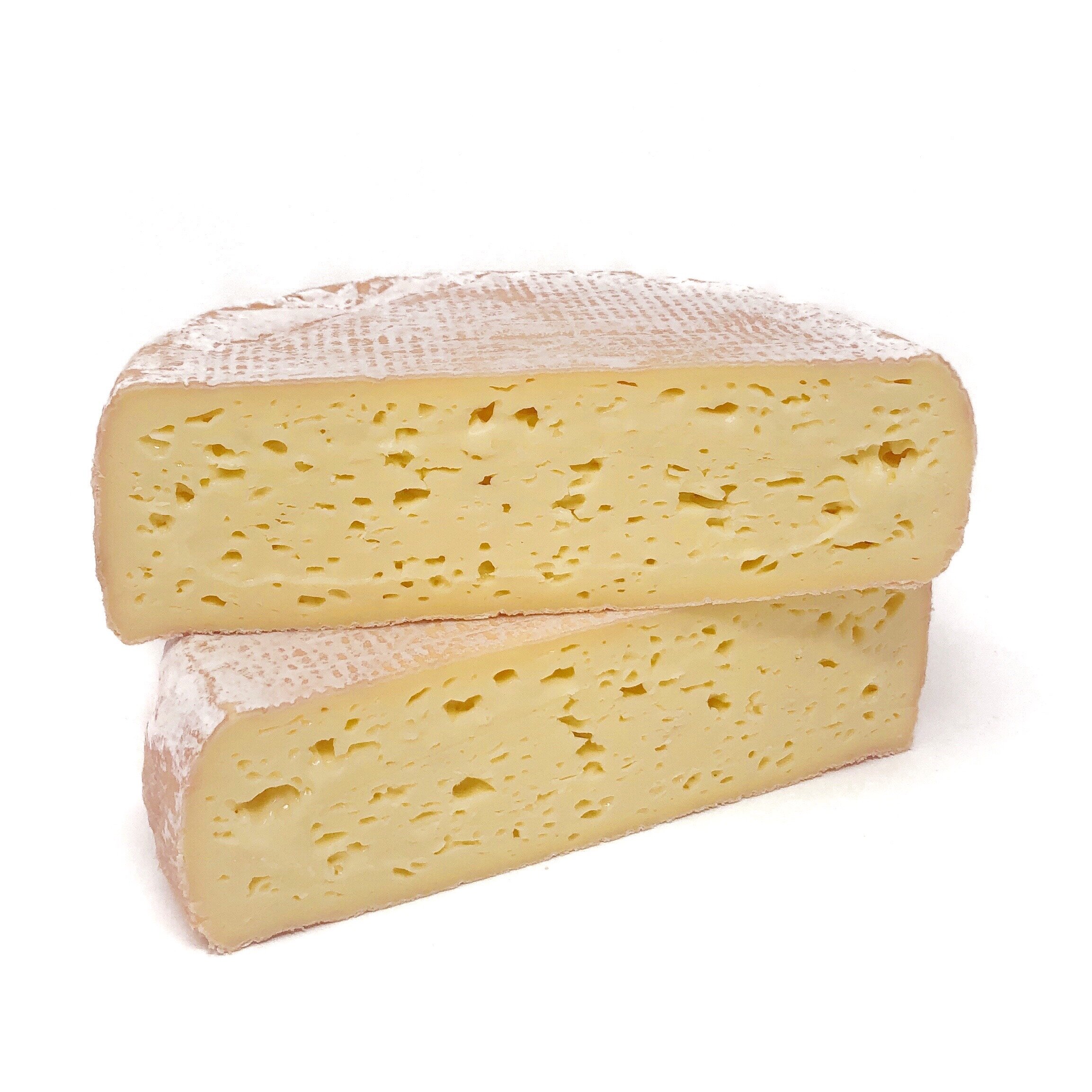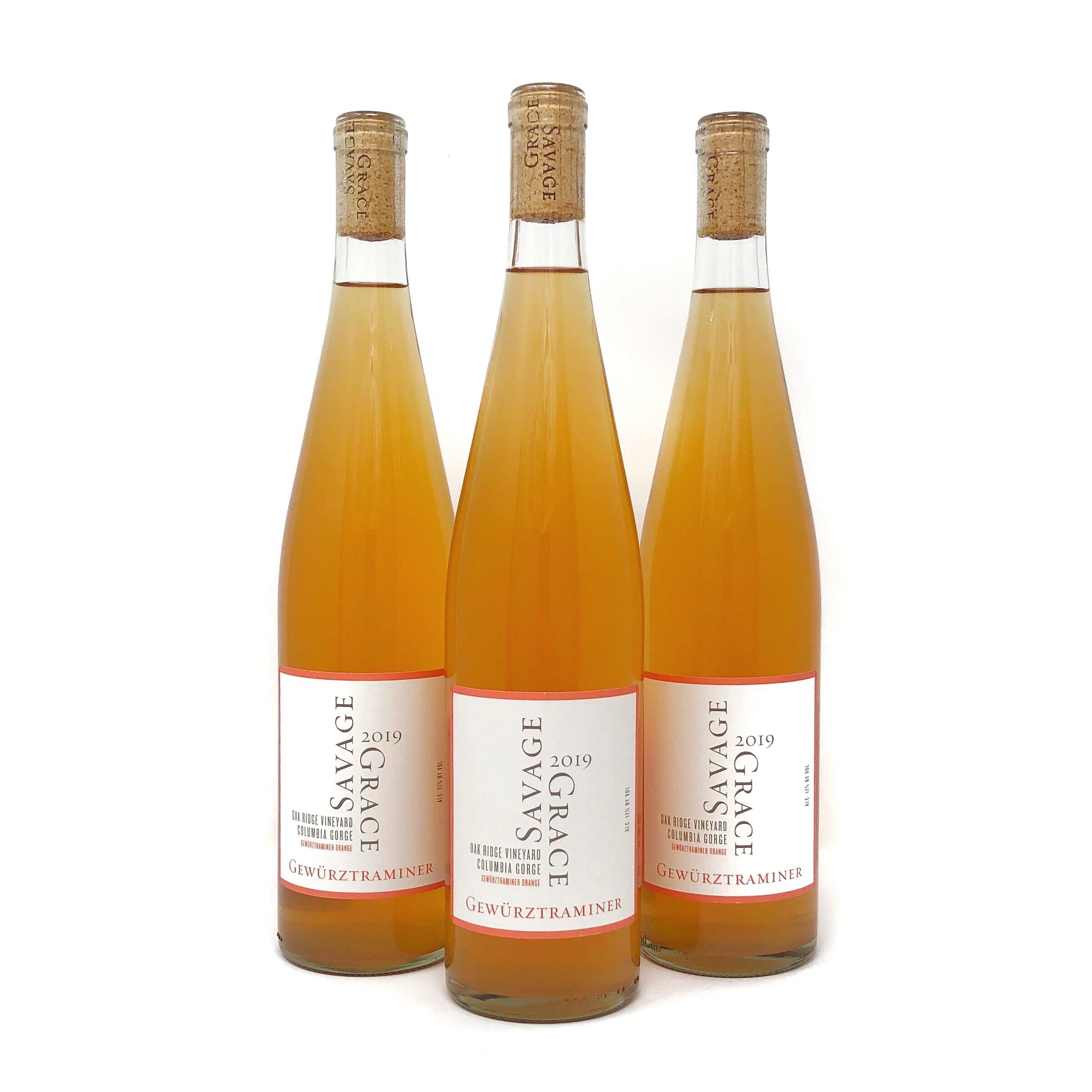Orange Wine Explained
“What is orange wine, exactly?” is a question we hear quite often from customers, and our short answer is that orange wine is white wine made in a red wine style. In other words, orange wine is white wine with extended grape skin contact. Grape skin contact, or ‘skin contact,’ is essential in the winemaking process. Grape skins impart tannins (or dryness) in wine and also dictate the wine’s color. The juice of all grapes, red and white, is almost colorless. For red wine, and orange wine, the juice is fermented with the grape skins. During fermentation, heat and alcohol are generated, which help coax out the pigments from the skins and thus tint the juice. With white wine, and rosé, the juice is already clear, and the skins are separated from the juice before fermentation.
Since grape skins vary in color, a final wine’s hue also ranges in color. Orange wine can be pale yellowish gold or it can be dark like burnt amber. Some orange wines are very tannic, and some are not; some are sweeter and fruity, while some are floral, full of minerality, and contain more acidity. Some white wines that are darker in color are not technically orange wine, but it sure does look it! As white wine ages and slowly oxidizes, it darkens in color; conversely red wine lightens in color as it ages. For example, the limited and super special 2008 R. López de Heredia Viña Tondonia Rioja Blanco is a white wine with 12 years of age. Its originally opaque color has darkened to a 14-karat gold hue as it has aged in its bottle.
Orange wine isn’t a new winemaking technique but one that has been used for thousands of years. The Republic of Georgia, for example, is famous for its amber and orange wines. The process is the same as it was 8,000 years ago: pressed white grapes are soaked and fermented underground in clay vessels called qvevri, and the resulting wine is a brilliant amber color.
Orange wine makes a fantastic pairing to so many foods and cheeses because of its extra tannin from extended grape skin contact. Below we’ve paired some of our favorite October orange wines to cheeses and tasty treats. To serve, chill down your orange wine as you would a white or rosé. Enjoy reading, drinking and eating!
2008 R. López de Heredia, Viña Tondonia Rioja Blanco - A Spanish blend of mostly Viura and Malvasia that’s seen 12 years of age in bottle. Aromas of butterscotch, roasted hazelnuts, candle wax, chamomile, sea salt and a hint of thyme. Today sisters Maria José and Mercedes de Heredia run the famous estate that is the pillar of traditional winemaking in Rioja. Pair to roasted butternut squash drizzled with honey, pine nuts, and golden raisins. Cheese pairing: Leonora
2018 Creta Paglia ‘Sciccu’ - This Calabrian beauty is made by natural winemaker Antonello Canonico from all indigenous Calabrian grape varieties. After being fermented in Slovenian oak with a few days of grape skin contact, this orange wine is transferred to cement vats to age. Notes of thyme, sage and clementines rise from the glass of this brilliant orange-hued wine and make for an excellent pairing with spicy Thai food. Cheese pairing: Parmigiano Reggiano G. Cravero
2019 Forlorn Hope ‘Queen of the Sierra’ Amber - This blend of Muscat, Chardonnay and Vermentino went through spontaneous fermentation in stainless steel tanks in the Sierra Foothills of California. Natural winemaker Matthew Rorick is uber-focused on producing wine that is fresh and vibrant, and highlights the grapes in their most natural form. This blend smells and tastes like clementines and apricots. Tannins are mellow in the 2019 vintage and it pairs with salty, roasted chicken breasts topped with a citrus, mustard and thyme glaze. Cheese pairing: Mendia
2019 Dominio Punctum ’20,000 Leguas’ Amber - A new producer for us! Winemaker Ruth Fernández makes wine in northern La Mancha in Spain. This 100% Chardonnay is hand-harvested at night under the full moon, and grape skins are soaked for 12 days on it’s juice during fermentation imparting the dark amber, caramel hue. This wine tastes like a barrel of fall apples and has a hint of bourbon on the finish. It’s a slam dunk pairing with breaded hake tucked into a warm taco shell and slathered with sour cream, corn and salsa verde. Cheese pairing: Appleby’s Cheshire
2019 Troupis ‘Hoof & Lur’ Moschofilero - Go Greek or go home! This 100% Moschofilero Greek orange wine is from natural winemaker Yiannis Troupis in Peloponnese. It’s slightly white-peppery while being also floral and citrusy. The palate is clean, with light to medium tannins, and has a faint nutty and honeyed finish like baklava. Its grape skins are fermented in terra cotta vessels imparting further nutty and clay-like nuances. Cheese pairing: Aged Bloomsday
2019 Savage Grace Orange Gewürztraminer - Gewürztraminer usually boasts notes of lychee and white flowers, but Michael Savage’s Gewürz is all citrus and candied ginger. It’s a pretty enchanting Washington State wine, and super limited too, and may be one of the few orange wines in Massachusetts from this part of the country. This is another natural wine beauty, completely unfiltered and unfixed. It’s geeky and fabulous and pairs to an array of foods but I especially like it with sushi and fresh fish. Try a salmon roll, dipped in ginger and soy sauce, take a sip of this Gewurz and say yummmmm. Cheese pairing: Oma

